Ascwg Qual Round 2024 Challenges Writeup
Hello guys, for the fifth year in a row I’ve had the honor to write the Digital Forensics Challenges for Arab Security Cyber War Games 2024. This year I wanted to introduce and teach the players about new topics in DF investigation such as SCADA traffic investigation and some deeper blockchain forensics.
So let’s jump right in.
First challenge: Level 4 disaster
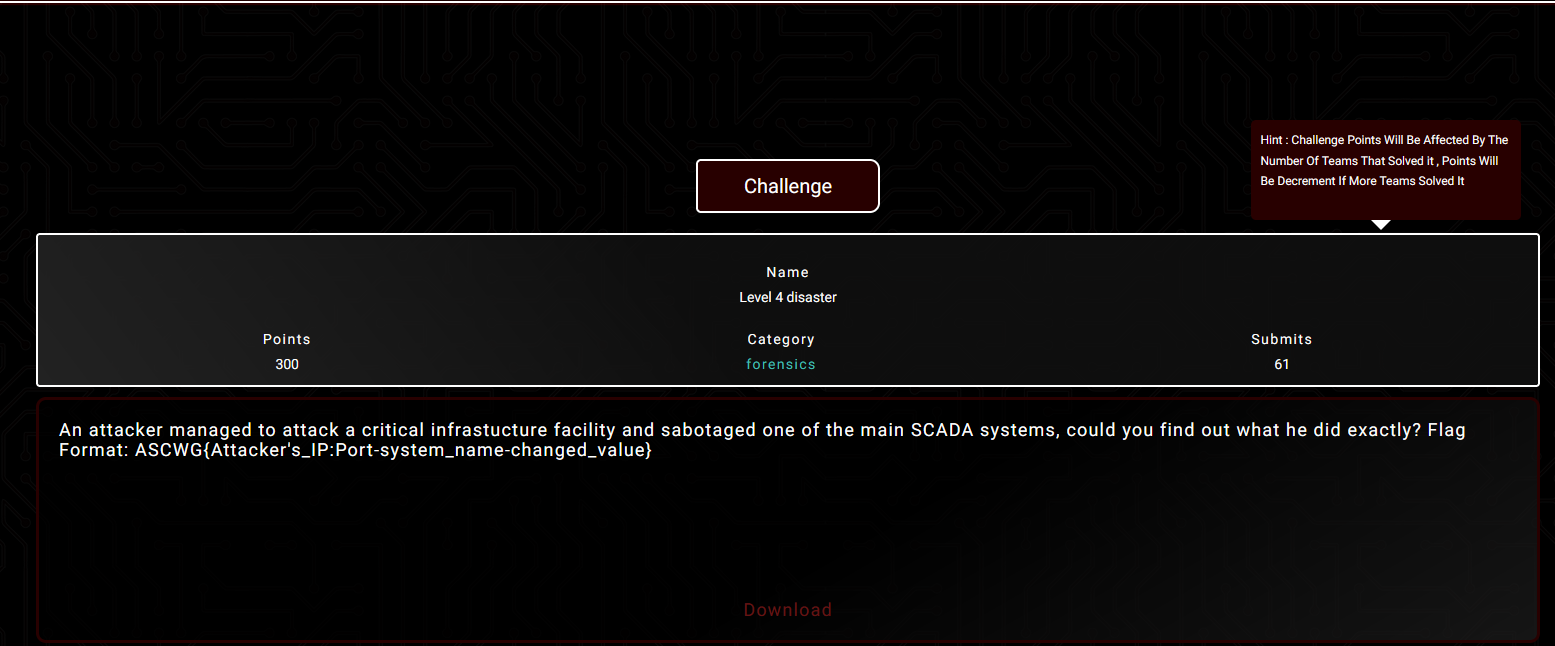
Description: An attacker managed to attack a critical infrastucture facility and sabotaged one of the main SCADA systems, could you find out what he did exactly?
Flag Format:ASCWG{Attacker's_IP:Port-system_name-changed_value}
From the challenge’s description and its name, we’re investigating an ICS system, upon downloading the challenge’s files, we find 2 files one of them is a pcap file and the other is called dump.xmpp.

throwing command cat on the file called dump.xmpp, we get some weird data, which will be useful later but we find one part of the flag, which is the system’s name.
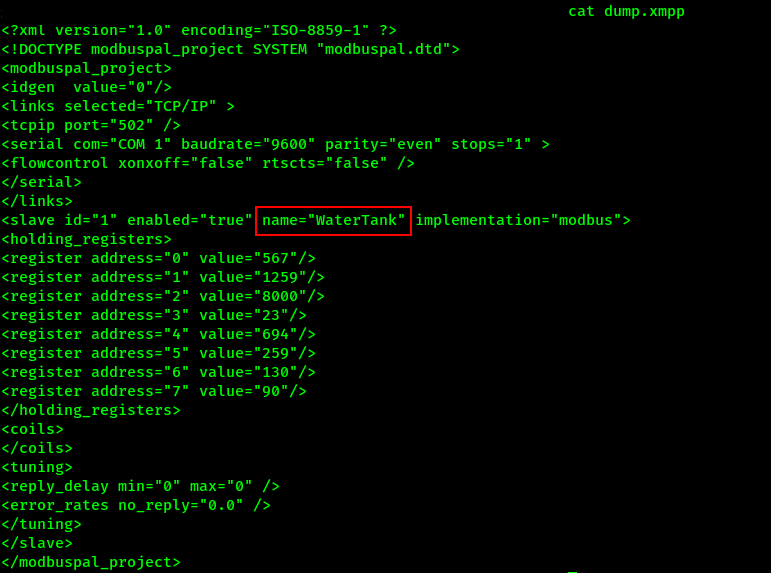
Okay, now let’s open the pcap file called monitor.pcap, once we open it, we find there are some weird protocol called Modbus/TCP, and by sorting them out we can understand what was going on.

By viewing each packet’s contents, we find that the attack first read the value in register number 3, which was 1024.

Then the attacker changed the value to 8000 as shown in this packet.
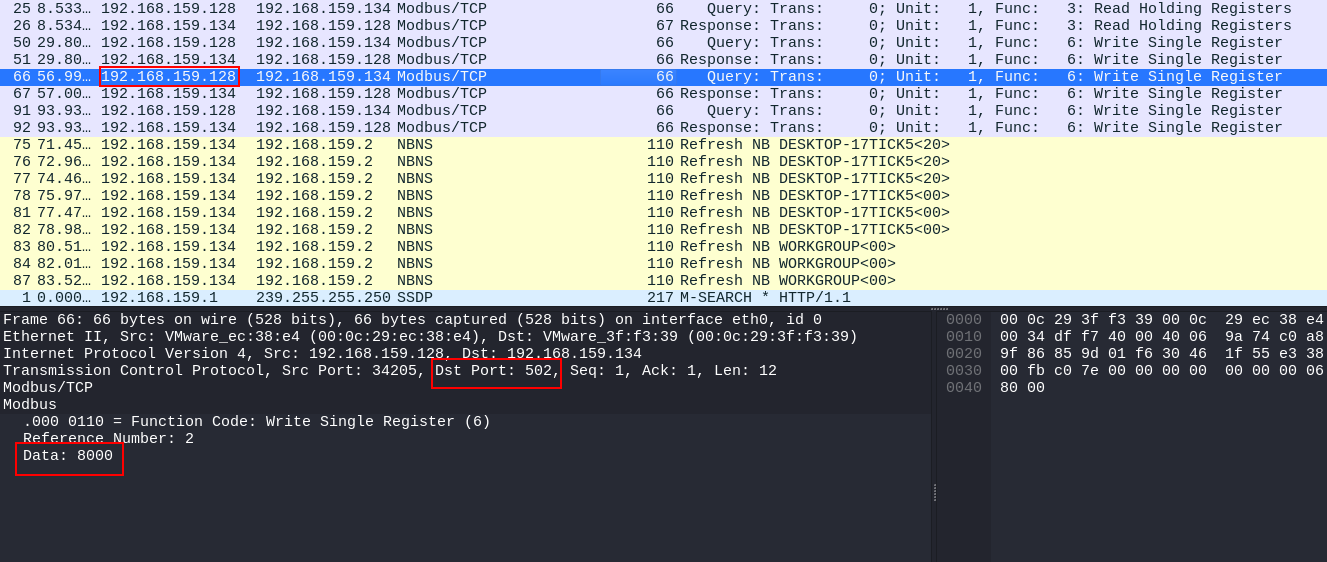
The flag required some parts to be pieced together and they are the attacker’s IP, the port, the system’s name, and the changed value. Now we have all of them.
Flag:ASCWG{192.168.159.128:502-WaterTank-8000}
Second challenge: We got a new contract for you.
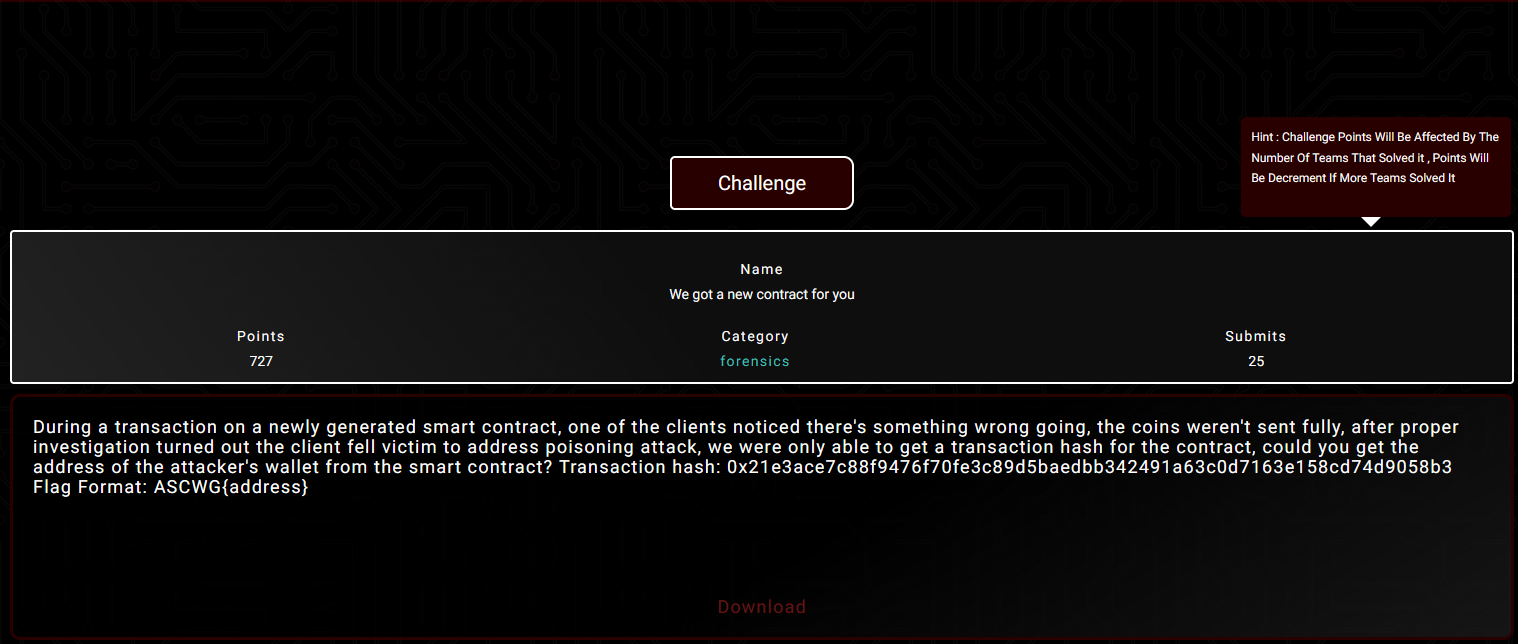
Description:During a transaction on a newly generated smart contract, one of the clients noticed there's something wrong going, the coins weren't sent fully, after proper investigation turned out the client fell victim to address poisoning attack, we were only able to get a transaction hash for the contract,
could you get the address of the attacker's wallet from the smart contract?
Transaction hash: 0x21e3ace7c88f9476f70fe3c89d5baedbb342491a63c0d7163e158cd74d9058b3
Flag Format: ASCWG{Address}
I want give a shout out to my dear friend and colleague Khaled ElSergany who helped me shape my idea into a proper challenge. All love, ma homie :D.
Let’s start by viewing the transaction hash on sepolia test network.
 Details _ Etherscan — Mozilla Firefox.png)
Okay, so we are looking for a contract which was used in an address poisoning attack, and we are looking for a wallet’s address which was the money sent to. This sounds super nice.
First, we click on the contract’s address, and we will be directed to page which includes all the transactions happened on this contract.
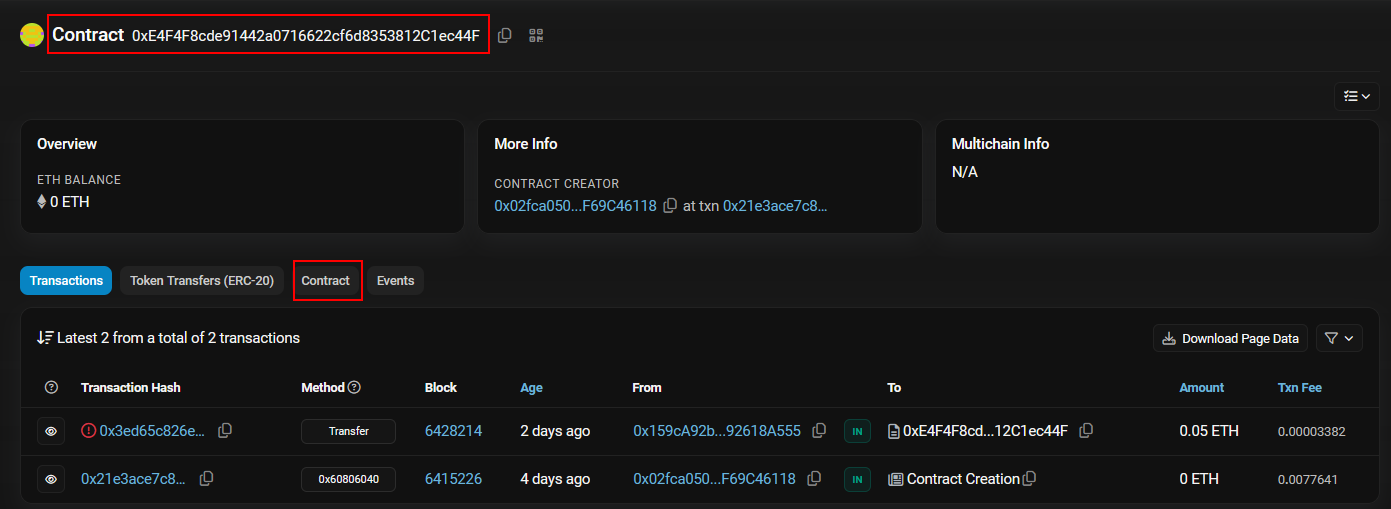
From here, we will click on the tab called contract, and we will view the opcode for the contract itself.
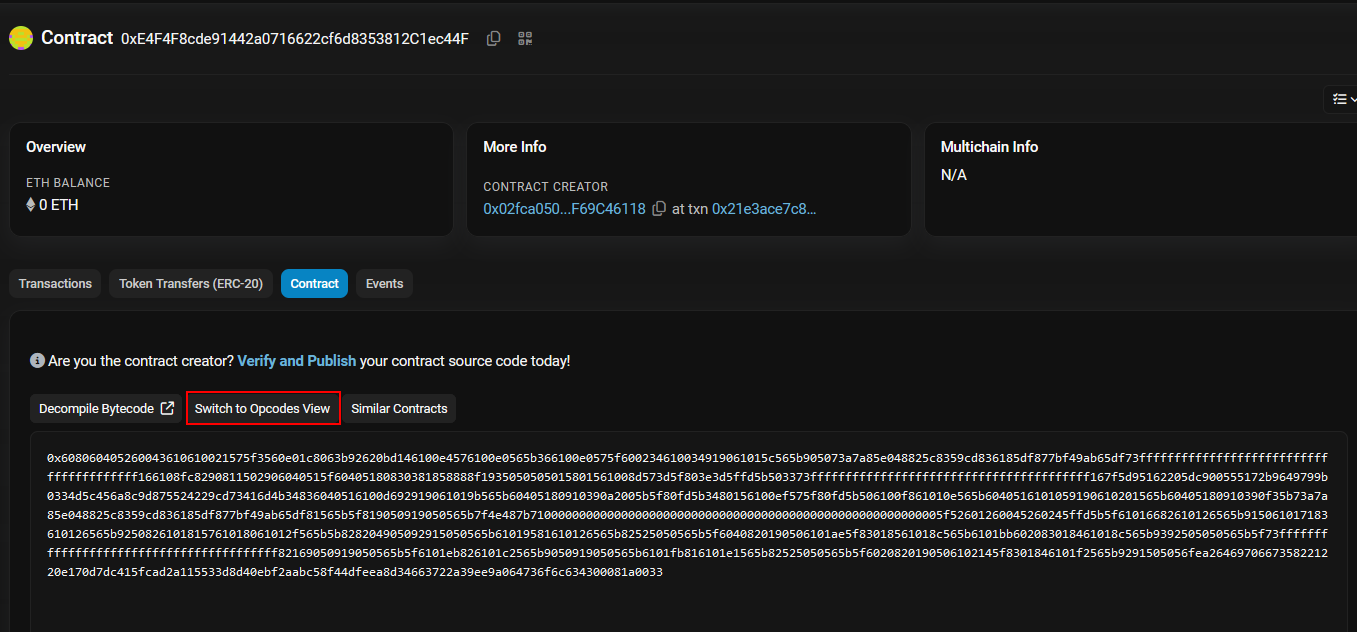
We will scroll down just a lil bit and we will see an opcode which pushes data to an address, and voila that’s the address we are looking for.
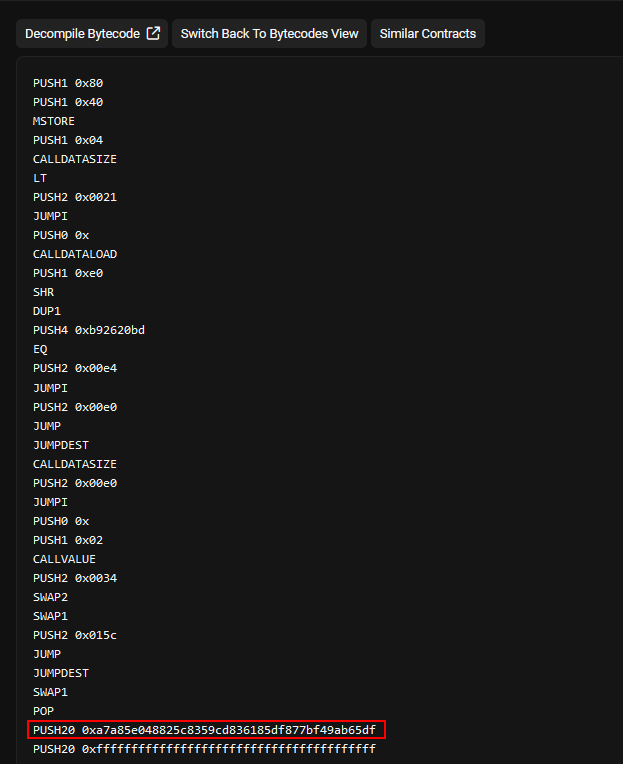
Flag:ASCWG{0xa7a85e048825c8359cd836185df877bf49ab65df}
Third Challenge: I know your secrets
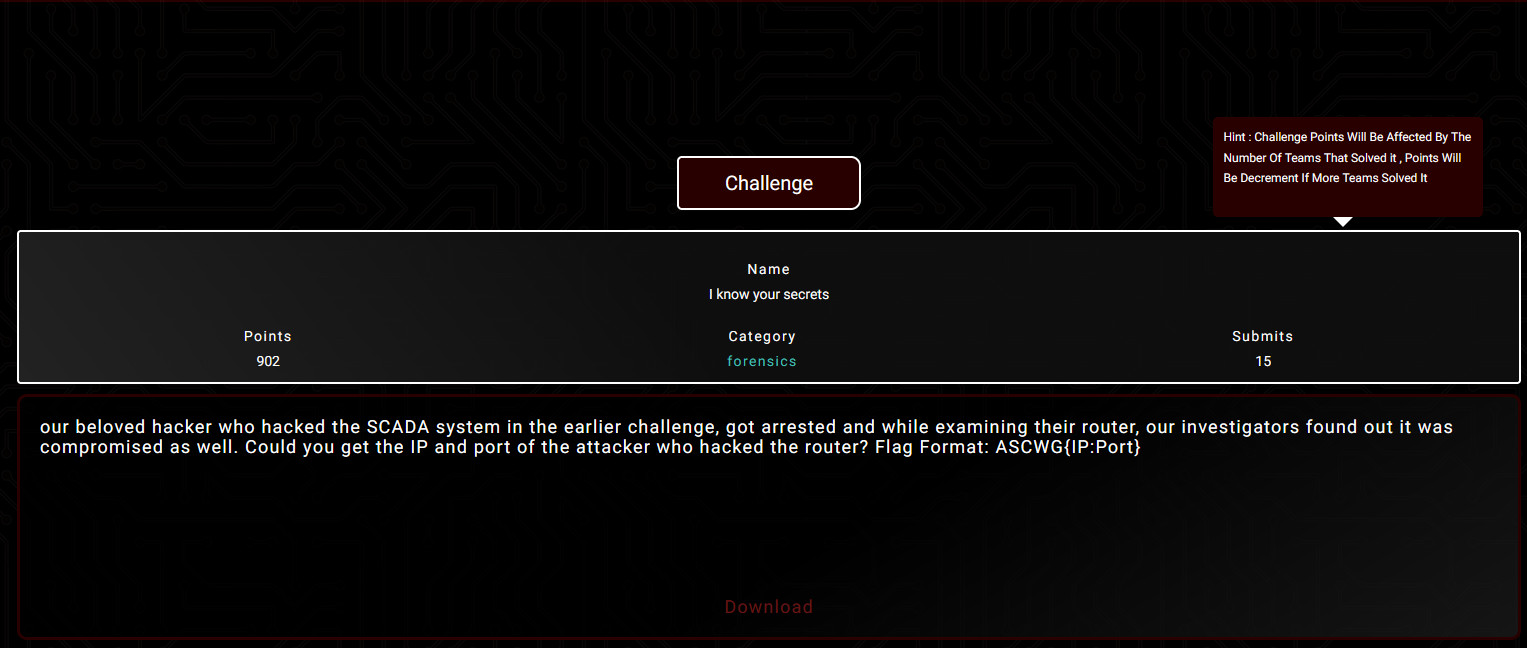
Description:our beloved hacker who hacked the SCADA system in the earlier challenge, got arrested and while examining their router, our investigators found out it was compromised as well. Could you get the IP and port of the attacker who hacked the router?
Flag Format:ASCWG{IP:Port}
Okay, I wanted to introduce the players to firmware forensics, so I created a backdoor in a router’s firmware, and they need to investigate the files to find the backdoor.
Upon downloading the challenges’ file, we find only a .bin file. Let’s extract it using binwalk

Okay, there are lots of files, which to investigate is like finding a needle in a haystack, a quick way to naivgate to which file was edited lastly is to sort them by date, which is what we’re gonna do using this command ls -ltr, we will find the last modified file in the end of the list.

By reading the content of this file, we find there’s a new class added and it has a base64 encoded string at the end of it, we decode it only to find there’s another base64 ecoded string as well, we decode it again, only to find the backdoor code and its respective IP and port.

Flag:ASCWG{41.129.186.63:50158}
Fourth Challenge: You can run, but you can’t land 1
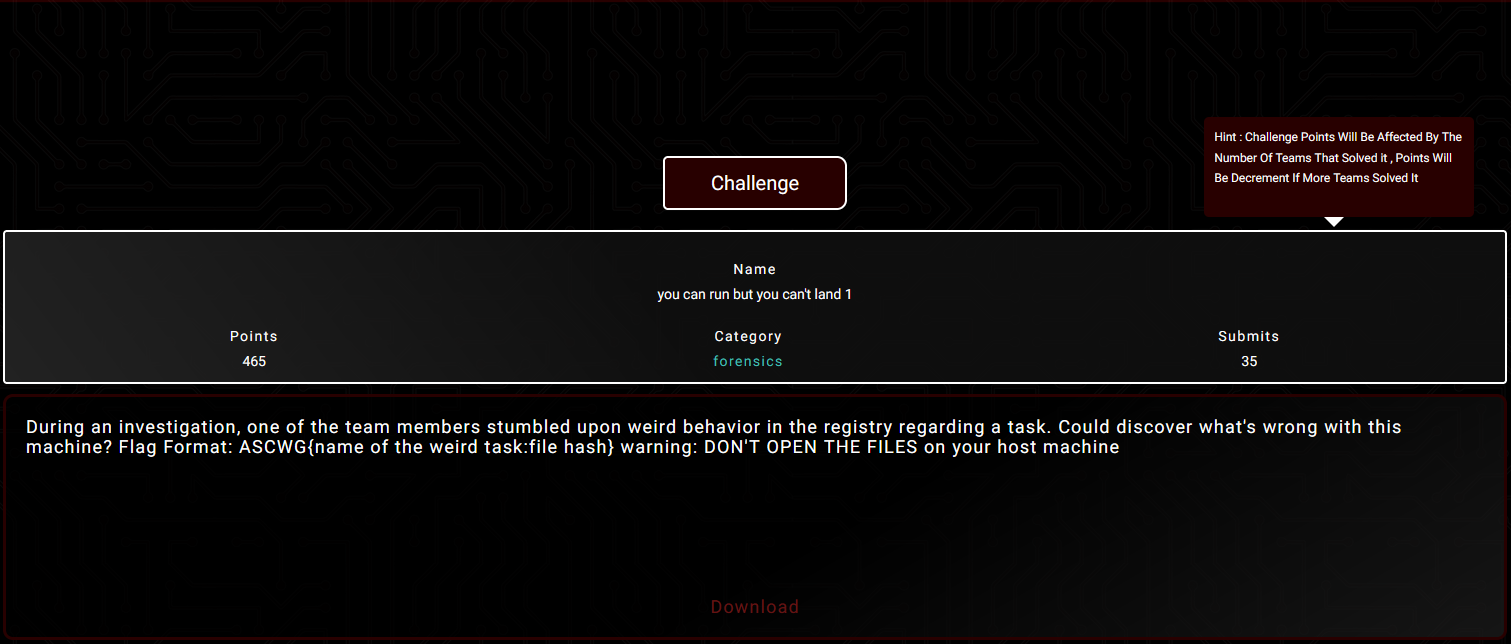
Description:During an investigation, one of the team members stumbled upon weird behavior in the registry regarding a task. Could discover what's wrong with this machine?
Flag Format:ASCWG{name of the weird task:file hash}
Okay, we are presented with 2 reg files one if for Hot_Key_Current_User (HKCU), and the other is for Hot_Key_Local_Machine (HKLM).
According to the description, we need to find something related to task, it’s quite obvious we are looking for scheduled tasks, so let’s start investigating them.
PS. To all the players, veterans or new and especially the new ones. WE NEVER OPEN A REG FILE ON OUR HOST MACHINE, no one is sane enough to do so, when you wreck your machine don’t blame anyone but yourselves.
We will start with HKLM file, we will navigate to the following key, \HKEY_LOCAL_MACHINE\SOFTWARE\Microsoft\Windows NT\CurrentVersion\Schedule\TaskCache\Tree, there we will find a task called RunDownloadAndExecuteDLL.

Perfect, now we need to know what it does exactly, so we will navigate to the following key in HKCU reg file, \HKEY_CURRENT_USER\SOFTWARE\Microsoft\Windows\CurrentVersion\Run.
Okay, so we find a task called DownloadDLL, which invokes base64 powershell encoded script.

Upon decoding the script, we find that it downloads a dll file and runs it in memory.

I wanted to teach the players that even discord could be used as a dropper to evade detection.
Now we download the file. For some reason, discord stopped downloading the file directly, so the work around was to send the link in chat to anyone and it’ll redirect the link to the designated file and allow the players to download it.
Now we have the task’s name and the file, let’s hash it and get the flag.

Flag:ASCWG{RunDownloadAndExecuteDLL:522B754BC18F4C89B493F630158A55EE733CDC11084F76B426547FA1853799E2}
Fifth Challenge: You can run but you can’t land 2

Description:From the previous REG files, could you get the IP and port of the attacker's machine?
Flag Format:ASCWG{IP:Port}
Okay, now we need to reverse the DLL file to get the IP and port of the attacker, let’s fire up IDA freeware and get to it (which is the correct and intended way)
Upon opening the file in IDA, we navigate to imports tab, and we find inet_addr
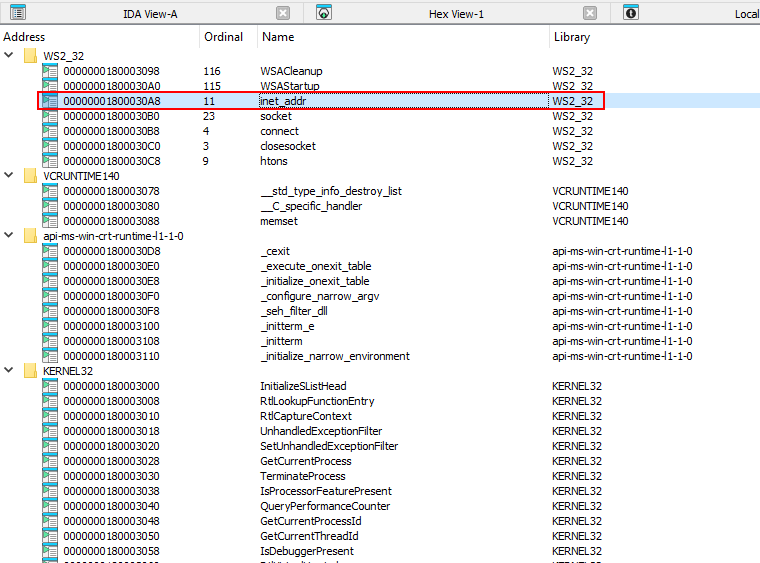
By following it and converting view to graph, we find that it XORs the IP’s octets with 0xAA.
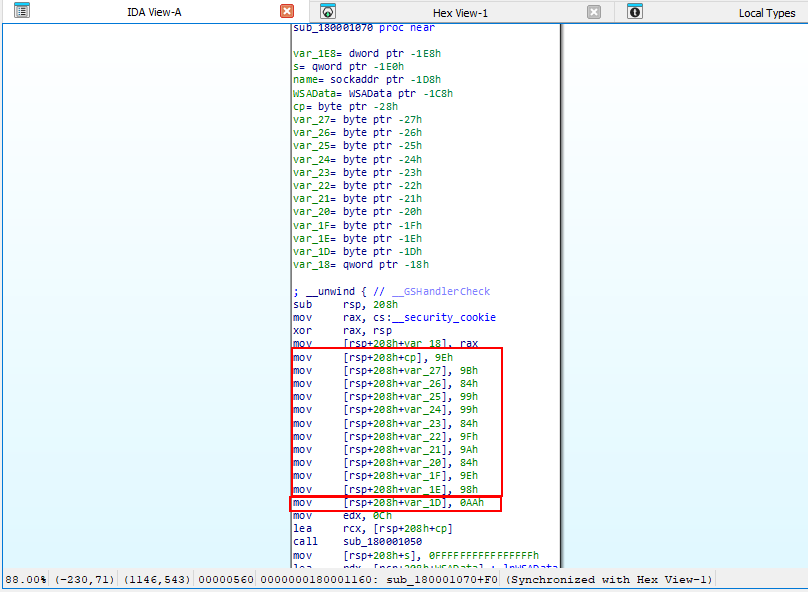
As for the port we go follow the graph to find it.
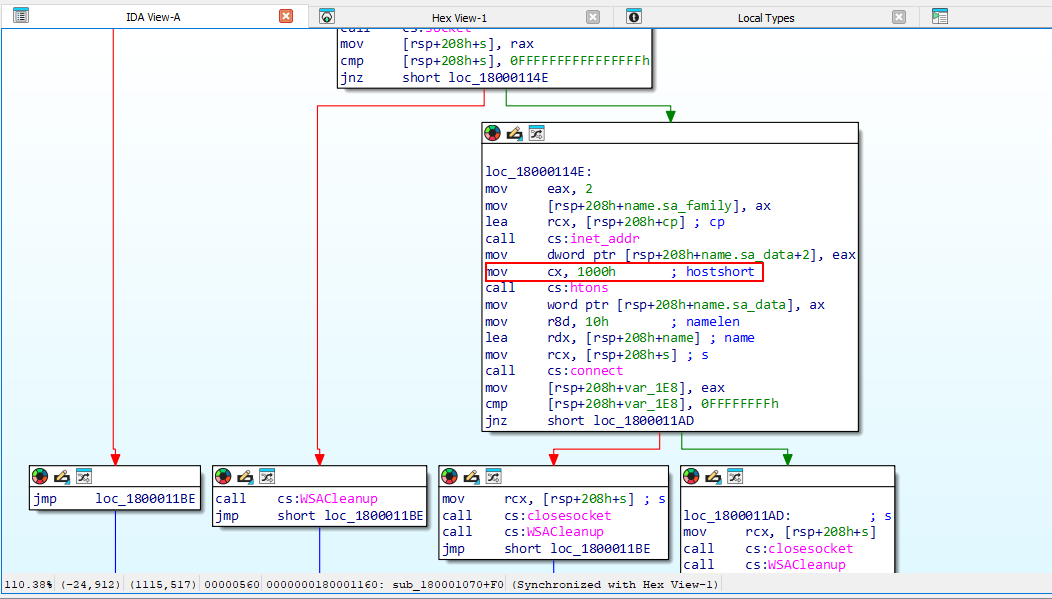
Converting these values to decimal, we get the flag.

Flag:ASCWG{41.33.50.42:4096}
And this concludes the qual round challenges, I hope that the players have learned something new from it, and congratulations to the top 10 teams, and I’ll see you all in the finals.